The Beginner's Lead Generation Guide For Business Owners
How lead generation drives sales using simple and proven offline and digital lead generation tactics.
"What gets measured, gets improved". A famous quote, and often totally misunderstood by many people because we often measure the wrong things.
Free Download: Landing Page Design: Step-by-step Guide
As an owner, you started your business for many reasons, but the main reason is to build an income stream to support you, your family, your lifestyle and all the other desires and dreams you have ever had. With this in mind, it becomes very important to ensure you are measuring your business sales - this is what drives and grows your income. Simply put: the more sales, the more income for you!
So what drives sales? How do you attract more customers? Lead generation is effective and our promise to you is to help you break down all the steps and elements you need to implement, measure and improve a successful lead generation campaign to increase sales and boost your income.
So let’s begin this lead generation guide. We will start with defining a lead, and then we'll cover the difference between physical and digital lead generation, how lead generation drives sales, why lead generation is so important, how to qualify a person as a lead or prospect, and why digital lead generation is much more cost-effective than buying leads.
What is Lead Generation?
What is a Qualified Lead?
A qualified lead is a person who has taken action to indicate they are interested in your company's product or service in some way, shape, or form. The important words here are “taken action”, because this is how that person is saying "Yes, I am interested in learning more". Below you will see a number of simple ways you can make it easier for people to self-qualify as a qualified lead.
What is Lead Generation?
Lead generation is the process of promoting, attracting and inviting people to take action to indicate they are interested in your company's product or service. You have experienced lead generation, it's all around you.
Typically, lead generation involves 3 steps:
Step 1 - Promoting: There are signs, advertising on TV, radio, YouTube, Facebook, LinkedIn, etc., and each of these promotions, ads, or calls to action are designed to grab your attention.
Step 2 - Attracting: This will draw your attention to the message and images which will create that urge to find out more.
Step 3 - Inviting: Using calls to action with promotional ads to invite people to take action to learn more. For example, "Call now", "Get a quote", "Download now", "Sign up for...", "RSVP", etc.
It is important to understand that it is the person who becomes interested that self-qualifies as a lead by taking action, not the business saying that person is a lead.
When a person takes action to become a qualified lead, they confirm they're ready to learn more and they enter the 'sales stage' or the 'close stage'.
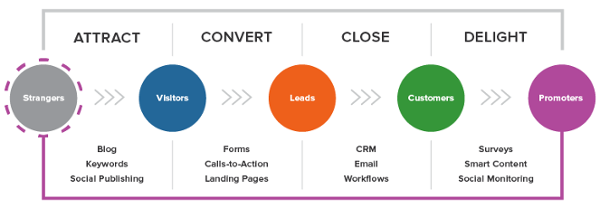
The close stage varies widely depending on the business, industry and the products and services being sold. Some sales are very quick, like buying a coffee, and some others are more complex, like buying a new car or a new home. We will talk more about the close stage further below. If you want to get started now, you can sign up for our lead generation course here.
Lead Generation Vs Brand Awareness
Lead generation is not to be confused with branding. Branding is all about “mind awareness”, which is designed with the long-term goal to associate the brand to a feeling or problem your target audience has. This is done by constantly promoting the brand to a person over time using repetition. Over time this brand will become “Top-of-mind”. Top-of-mind awareness is a marketing metric used to define the high positioning of a brand among consumers.
For example, when you think of sports equipment, top-of-mind brands are Nike, Rebook, Adidas. When you think of fast food, top-of-mind brands are McDonalds, KFC, etc. The power of branding is when a group of people are talking about sports equipment or fast food at home, in the office, or just about anywhere else and the conversation will often mention a specific brand name. This always generates sales for the companies.
Branding and lead generation share the first 2 steps of the abovementioned list: promoting and attracting (messaging). With lead generation we are adding a third step: inviting the person to take action now.
By using a lead generation campaign you still need to promote your business; however, by adding step 3 you are collecting the qualified leads' contact details, which makes it cheaper for you to follow up and nurture the leads using more personal and one-to-one communication methods.
The big downside to branding is you need to keep branding. If you stop advertising, people will start to forget you or your competitor will take over as “top of mind” with consumers.
With lead generation campaigns you can choose to turn it on when you need more leads or off when you have too many leads, offering you flexibility and smaller promotional budgets.
Physical vs Digital Lead Generation
As the word suggests, physical or offline lead generation consists of all activities you do in the physical or offline world, while digital lead generation consists of all activities you do on the internet or in the online world. In both cases your tactics to promote, attract and invite people to learn more about your business, products and services will be similar, it is the environment that will determine what you do. Below we discuss a number of tactics you can use for both methods.
Let's look at the pros and cons of both physical and digital lead generation campaigns, the first step of promoting and getting the attention of your target audience.
Physical vs Digital Promoting Activities
|
Elements |
Physical |
Digital |
|
Labour |
Con: Labour to build signs, flyers, letters is limited by the physical number of people who can walk or drive by the sign. |
Pro: Labour to build digital assets is quicker and can be viewed by people worldwide. |
|
Cost |
Pro: Once created, signs last a long time, and flyers and letters can be reprinted for a minimal cost. |
Con: Due to increased competition, digital assets need to be constantly promoted in order to be seen, be it organic or paid advertising. |
|
Time |
Con: Slow-to-build marketing assets and expensive to change if the message doesn't work. |
Pro: Fast-to-build marketing assets and quick to change if the message doesn’t work. |
Physical vs Digital Attracting Activities
As mentioned above, the second step of lead generation is to attract your target audience by creating the urge for people to learn more about your product or service. We do this when messaging, using words and images.
|
Elements |
Physical |
Digital |
|
Labour |
Pro: Face-to-face, like referral marketing, door-to-door or in-store work best because you can customise the message to each individual person of your target. Con: Signs, flyers and letters have limited space and are not good for complex messages. |
Pro: With words and images you create a powerful message. For a complete message you can also use video to communicate. |
|
Cost |
Con: The labour cost of having staff do face-to-face is high and limited to the number of people they speak to at one time. |
Pro: The cost to upload your message to the internet is minimal or often free. |
|
Time |
Con: Slow, because staff or referrers are limited by the number of people they can talk to at one time. |
Pro: Fast, and the message can be seen and consumed over and over again by people 24/7. |
Physical vs Digital Inviting Activities
The last step is inviting, that is using a simple call-to-action statement to allow your target audience to decide if they want to learn more.
|
Elements |
Physical |
Digital |
|
Labour |
Pro: With face-to-face interactions, this is simple and easy to do. Often you are able to agree on things like booking a time to follow up, etc. Con: Often, people see the signs, flyers and letters but forget to take action later. |
Pro: People are able to take action immediately to register their interest. |
|
Cost |
Con: The labour cost of having staff do face-to-face is high, especially if they deal with the wrong audience. |
Pro: The cost of tools like forms, landing pages and chatbots is affordable or free to get started. |
|
Time |
Con: Slow, because staff or referrers are limited by the number of people they can talk to at one time. |
Pro: Fast, because forms, landing pages and chatbots, once created, are instantly ready to go. |
A special note, calls to action like “Call Us” that make use of the telephone can be employed in both physical and digital lead generation campaigns. We also encourage, where you can, to use this method.
Summary
In short, digital lead generation has more pros and benefits, and this is the reason why most companies and industries use digital as their main marketing strategy, as you will see later in the industry trends below. However, physical lead generation has always proven, and we still see this, to provide higher sales conversion results when sales are related to physical items such as retail, etc. This is simply because it's human nature: it is easier for people to decide to buy items when they can see, touch and feel the things they want to buy.
How to Generate Leads
Now that we understand how physical and digital lead generation fits into the whole marketing methodology, let's walk through the steps of the lead generation campaign. First, a person discovers your business through one of your promotional channels, such as your website, blog, social media page, flyer at the tradeshow, or business card at the networking event.
What happens next will be different from physical to digital, based on the environment or the device the person is using at the time of interaction with your promotional channel.
Digital Lead Generation Process
The visitor discovers your promotion ad (call-to-action) on your website, blog, or social media page.
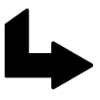
|
That visitor then clicks on your promotional ad (call-to-action) — an image, button, or message that encourages website visitors to learn more. |
|
The ad takes your visitor to a landing page, which is a web page that is designed to capture lead information in exchange for an offer. |
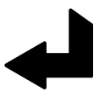 |
|
 |
An offer is something of value that's being "offered" on the landing page, like an e-book, a course, a template, webinar, coupons, get a quote, book a job etc. The offer must have enough value for the visitor to want to take action to self qualify as a lead by providing their personal information in exchange for access to the offer. |
|
The form on the landing page consists of fields that collect visitors' details. Forms are often hosted on landing pages, but technically they can be embedded anywhere on your site, or even on social media like Facebook and Linkedin. Once the person completes the form, they are redirected to the thank-you page — bang! — you now have a new qualified lead! |
 |
|
 |
The thank-you page is a web page just like the landing page, where the visitor is able to access the offer and any other instructions required to access the offer. Thank-yous are not always required, however it highly recommends you use them, as it does make it a lot easier to track the results of lead generation using tools like Google Analytics. |
Once you put all these elements together, you can use your various digital promotional channels to drive traffic to your landing page to start generating leads.
Physical Lead Generation Process
The visitor discovers your promotion ad (call-to-action) in a newspaper, on TV or radio, a sign, a flyer at a tradeshow, a letter post by mail, or in-store.

|
That visitor will read the offer as something of value and follow the call-to-action to visit your store, make a phone call, complete a physical form or talk to physical staff if they are close by. |
|
Once the person takes action — bang! — you now have a new qualified lead! |
 |
Compared to a digital campaign, the physical lead generation process often has few steps, but due to the physical size of your promotional ad, you often have less room to explain your offer and explain the value of your offer. This is why most physical lead generation campaigns will use price-discounting offers as you often seen in retail advertising.
What is a Good Lead Generation Offer
Not to be confused, your offer is to persuade the person based on your sales process, the lead generation is an invitation. So when crafting your offer you need to first have a clear objective and why you are making this offer. Your sales process will depend on how you and the customer are going to transact the sales and deliver the product/service. Commonly there are 3 main types of sales transactions.
- Cash sales: the money collected when the business makes the sale and delivers the product/service to the customer. Here, the offer’s objective is to get the person to visit the business location commonly seen in retail and hospitality.
- Credit sales: the money isn’t collected until sometime after the sale is made; the customer is given a period of time they have to pay the business. Here the offer’s objective is to get the person to come to the business location, or to call for phone orders, or visit website online transactions etc.
- Advance payment sales: the money is paid by the customer to the business before the product/service is delivered or used by the customer. Here the offer’s objective is similar to credit sales to get the person to come to the business location, or to call for phone orders, or visit website online transactions etc.
Depending on your sales process, and your customer’s buying journey, this will determine the objective of your offer.
What is a Customer's Buying Journey?
It is the mental path or journey your customer thinks about as they become aware of, explore, evaluate and buy a new product or service. These mental thoughts will be different for each customer on their own buying journey, so to help, we recommend breaking the buying journey into 3 stages using the inbound marketing framework of:
- Awareness - the person is experiencing a problem in their life and has just become aware of it and will start to educate themselves by asking questions and researching online etc.
- Consideration - the person has now clearly defined their causes of the problem and will start researching and understanding all the different ways and/or methods to fix and solve the problem.
- Decision - the person has decided on a solution; the method to their problem is now an activity in finding a business that best can provide a product or service to buy.
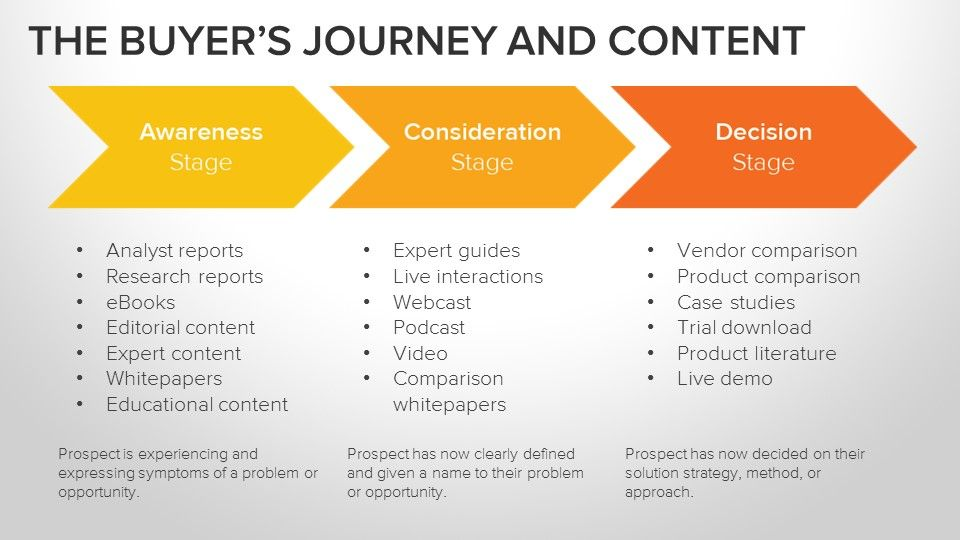
Lead Generation Offer Examples
For simple products and services like selling a coffee, food, clothes or home services, the buyer’s journey from awareness to decision often happens within a few minutes or a few days. So your objective is to focus on decision stage offers to attract in-store visits, services like home services and health clinics will want to attract more bookings, online businesses will want to attract more web visits to sell products, subscriptions and services etc..
|
Buyer Journey Stages |
Offer Examples |
|
Decision Stage Offers |
10% Off Discount, Buy 1 Get 1 Free, Student Discounts, Limited Time Coupons Or Discounts, Holiday Discount, Flash Sales, Free Delivery, Gift Vouchers, Free Workshops Loyalty Points Random Rewards, Cash Back, Package Deals, Multi-purchase Deals, Vendor Comparison, Product Comparison, Case Studies, Trail Download, Product Sheets, Live Demo, Free Samples, Free Online Course, Free Email Course, Free Quote, Free Consultant, Free Demo |
|
Consideration Stage Offers |
Meetups, Webinars, Guest Speaker Events, Networking Events, Conferences, Templates, Handy Checklist, Live Interactions, Webcast, Podcast, Videos, Comparison Whitepapers. Seminar or Half-Day Event, Workshops and Masterclasses, Trade Shows and Event Expos, Festivals and Parties, Quiz, Giveaway, Surprise Random Followers, Comment to Win, Photo Contest, Photo Voting, Short Video Contest, Check-in to Win Contests, Trivia Contest, Fun Caption Contest, Fill in the Blank Contest, Refer a Friend Contest, Seasonal Holiday Contest, Selfie Contest. |
|
Awareness Stage Offers |
E-books, Whitepapers, Recorded Webinars, Analyst Reports, Research Reports, Editorial Content, Education Content, Checklists, Guides, Kits, SlideShare Presentations, Cheat Sheets. |
Lead Generation Landing Pages
A landing page is a powerful way to automate lead generation; think of your landing page as digital sales representatives who are gathering information about your potential customers, working for you 24 hours a day, 7 days a week. Landing pages are designed to frame an offer in a much more targeted way than your homepage on your main website.
As we mentioned above, a landing page conversion path consists of 4 main elements
- Call-To-Action button or promotion ad that a visitor sees informing them of an interesting offer.
- Landing page without excess navigation so as not to distract them from completing the desired action.
- Form is located on the landing page that asks them to complete the form with the necessary information. (The landing page can also include a phone number to call).
- Thank-You page - After submitting the form, the visitor is then redirected to a “Thank-You" page where they can download the offer or receive an email following up with the offer.
Lead Generation Marketing
Once you put all these elements together, you can use your various promotional channels to drive traffic to your landing page to start generating leads.
But what channels should you use to promote your landing page? There are a number of ways online and offline to promote your lead generation offers. Let’s talk about the online or digital methods of lead generation — lead gen marketing.
Digital Lead Generation Strategy
For the digital world, there are organic (free); the best promotional channels are email, social media and blogs using search engine optimisation.
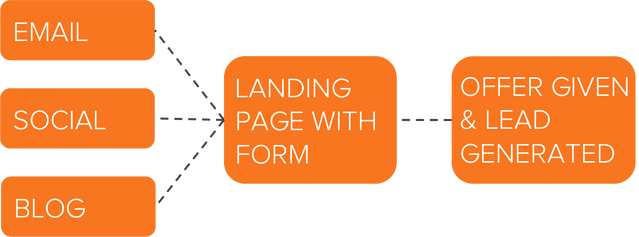 Let’s go into depth on these and talk about a few others.
Let’s go into depth on these and talk about a few others.
Content Marketing Lead Generation
Content is a great way to guide users to a landing page. First, you create content to offer visitors useful, free information. You can place the CTAs anywhere on your website — in-line, bottom-of-post, homepage, pop-ups, or even on the side panel etc. The more delighted a visitor is with your content offer, the more likely they are to click your call-to-action and move onto your landing page.
Email Lead Generation
Email is a great place to reach the people who already know your brand and product or service. It’s much easier to ask them to take an action since they have previously subscribed to your list. Emails tend to be a bit cluttered, so use CTAs that have a compelling copy.
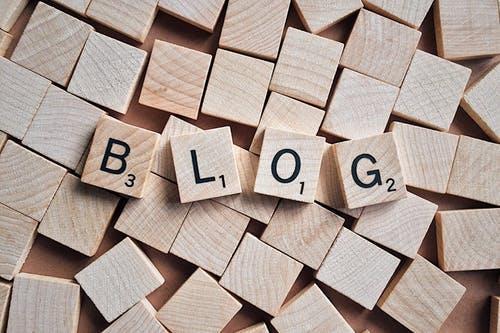 Blog Lead Generation
Blog Lead Generation
The great thing about using your blog posts to promote an offer is that you can tailor the entire piece to the end goal. So, if your offer is an instructional video on setting up Google Search Console, then you can write a blog post about how to select your marketing metrics … which would make your CTA highly relevant and easy to click.
Social Media Lead Generation
Social media platforms like Facebook, Linkedin, Instagram and YouTube make it easy to guide your followers to take action, from the swipe up option on Instagram stories to Facebook bio links to bitly URLs on Twitter. You can also promote your offerings on your social posts and include a call-to-action in your caption.
SEO Lead Generation
SEO lead generation encompasses a wide range of tactics and strategies depending on the keywords and location you wish to attract leads. To rank on the first page of Google with greatly increased new leads, it will take between 3 to 9 months so it is a long term strategy, for businesses wanting to attract local leads we recommend getting started with Google My Business, and this will ensure your business is ranking on Google Maps and the local searches. Also remember to register for Bings Maps and Apple Maps for iPhone users.
Facebook Lead Generation
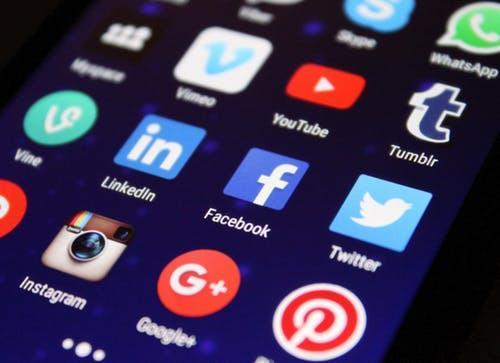 Facebook has been a method for lead generation since its start. Originally, companies could use outbound links in their posts and information in their bios to attract strangers to their websites. But when Facebook Ads was launched in 2007, and its algorithm began to favor accounts that used paid advertising, there was a major shift in how businesses used the platform to capture leads. Facebook created Lead Ads for this purpose. Facebook also has a feature that lets you put a simple call-to-action button at the top of your Facebook Page, helping you send Facebook followers directly to your website.
Facebook has been a method for lead generation since its start. Originally, companies could use outbound links in their posts and information in their bios to attract strangers to their websites. But when Facebook Ads was launched in 2007, and its algorithm began to favor accounts that used paid advertising, there was a major shift in how businesses used the platform to capture leads. Facebook created Lead Ads for this purpose. Facebook also has a feature that lets you put a simple call-to-action button at the top of your Facebook Page, helping you send Facebook followers directly to your website.
LinkedIn Lead Generation
LinkedIn has been increasing its stake in the advertising space since its early days. When it comes to lead generation, LinkedIn created Lead Gen Forms, which auto-populate with a user’s profile data when they click a CTA, making it easy to capture information.
LinkedIn has been increasing its stake in the advertising space since its early days. When it comes to lead generation, LinkedIn created Lead Gen Forms, which auto-populate with a user's profile data when they click a CTA, making it easy to capture information.
Google Ads Lead Generation
When we say pay-per-click (PPC), we’re referring to ads on search engine result pages (SERPs). Google gets 3.5 billion searches a day, making it prime real estate for any ad campaign, especially lead gen. The effectiveness of your PPC campaign relies heavily on a seamless user flow, as well as your budget, target keywords, and a few other factors.
Examples of Google ads lead generation
- How To Generate Roofing Leads Using Google Ads
- How To Generate Business Coach Leads Using Google Ads
Retargeting Lead Generation
The sole purpose of an ad is to get people to take action. Otherwise, why spend the money? If you want people to convert, be sure that your landing page and offer match exactly what is promised in the ad, and that the action you want users to take is clear.
Offline Lead Generation Strategy
For the offline world, there are physical methods and the best promotional channels are direct mails, events, trade shows, and networking events. Let's explore just a few best methods for you.
Direct Mail Lead Generation
As for sending mail, people still love to get mail — of course not bills or junk mail, but visually and pleasant mail. A great-designed postcard or sample package that is targeted will pay big dividends. Be sure that any offers or promotions you advertise are trackable by giving them a unique promo code so you can backtrack how your customer found you.
As most businesses have abandoned direct mail for the email inbox, you may find direct mail is a good way to stand out from your competitors.
Print Ads Lead Generation
Another amazing form of offline lead generation is print ads, such as magazines, newspapers, posters, billboards or flyers. Most people are inundated by mobile phone screens all day. However, many still subscribe to magazines, books and paper, as it’s still refreshing to hold something in their hands.
To find the right channel for your print ads, always check the volume and frequency of distribution, the profile of their readers, and the pricing.
Events Lead Generation
Giving people a reason to come to your office or shop is a great way to generate offline leads and attract new customers. It is also a great way to build awareness of your company’s reputation in the community. Product demos or expert speaker events can help to get active customers and new leads into your space.
For most businesses, their product or service can be associated with or complementary to other local events. For example, a local cycling shop would be a perfect fit to be a sponsor of a local race. As a sponsor, you often have the ability to have prominent signage as well as a presence at the event where staff can display products and interact with attendees. Just start by doing a Google search for local events in your community that your target audience may attend, and start meeting the locals.
Inbound Phone Lead Generation
Getting people to call you can be initiated through both offline and online channels. For offline lead generation you can put your business phone number on car wraps, physical flyers, posters, and handouts. Using QR codes on the shop fronts and instore can be helpful for smartphone users who are using their devices to research products and services, they might even make a phone call with them as well.
Outbound Lead Generation
Cold phone calling people can be annoying and intrusive, but it also has a very low conversion rate. This strategy will be much more effective with using a quality target list of people leads that you have generated yourself through other offline techniques like competitions, or working with other local businesses using co-marketing methods.
Networking Lead Generation
Meeting people face-to-face is an enjoyable opportunity to make a lasting impression and fast-track lead/customer relationships. Industry trade shows, conferences, and networking events give the environment to connect with a large number of new potential leads in a short amount of time. Just remember to begin to nurture and follow-up within the days of the first contact and take plenty of business cards.
Why Not Just Buy Leads?
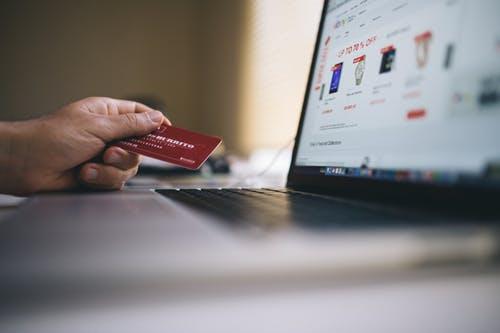 To buy or not to buy leads? Business owners just want more sales and to fill their sales funnel — and the pressure is to fill it quickly. The temptation to buy leads is strong and overwhelming.
To buy or not to buy leads? Business owners just want more sales and to fill their sales funnel — and the pressure is to fill it quickly. The temptation to buy leads is strong and overwhelming.
Buying leads, as opposed to owning your lead generating system, is much easier and takes far less time and effort, enough that it is more expensive.
If you are deciding to buy leads, follow these steps:
Step 1: Know who you are dealing with, always work with a professional lead generation company, not just a spammer who makes all promises and doesn't deliver.
Step 2: Be aware, ensure lead generation companies are following your country's commercial and privacy laws because most countries will fine both the business that generates the leads and the business that is selling the product or services.
Step 3: Always sample the leads before signing a long-term contract.
Step 4: Use more than one lead generation service, when you become dependent on buying leads, the company, at any time, can increase the price or stop providing you with leads.
The main reason we do not recommend buying leads is they don't actually know you. Normally, the lead has "opted in" at some other site when signing up for the offer, and didn't actually opt-in to receive anything from your company.
When you follow up, they often do not remember and are confused about who you are, making the initial contact more difficult and intrusive. Then there’s a high chance they could flag your message as spam, which isn’t good for business.
It’s always better to generate and own your lead generation system than to buy them from someone else.
How to Qualify a Lead?
When a person completes a landing page, they become a self-qualified lead because they have taken action to say they are interested in learning more about your products and services. However, this does not say they are ready to buy. The key is to ask the lead for enough information to help you rank all the leads based on their level of interest between cool, warm, and hot.
Let's assess each scenario:
Gauging a Lead’s Level of Interest
- Coupon: if your coupon is valuable enough, the lead may be willing to give you their name and email address in exchange for it. While not a lot of information, it's enough for you to know that person has an interest in your company, not when they will buy.
- Content: With a coupon, it shows an individual has a direct interest in your product or service, education content like an ebook or webinar doesn’t. So to measure a person's interest in your business, you'll need to collect more information to determine whether they're a good fit.
- Job Application: A person who fills out a job application form is willing to share a lot of personal information because they want to be considered for a position. This is high or hot interest.
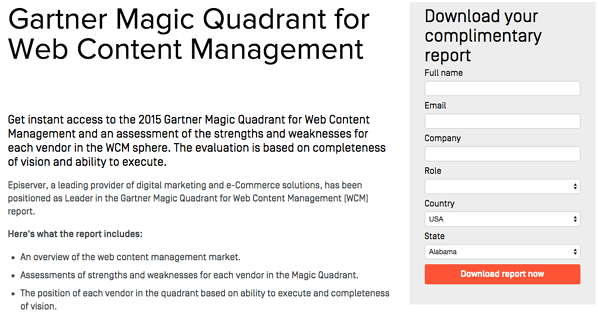 The general rule is that the more a person is willing to provide personal information, this shows their true interest in the products and services. You'll need to collect enough information to gauge whether someone has a true, valid interest — how much information is enough information will vary depending on your business. Often it is best to break up the collecting of information over a few different times of engagement, using lead-nurturing campaigns.
The general rule is that the more a person is willing to provide personal information, this shows their true interest in the products and services. You'll need to collect enough information to gauge whether someone has a true, valid interest — how much information is enough information will vary depending on your business. Often it is best to break up the collecting of information over a few different times of engagement, using lead-nurturing campaigns.
Lead Generation Scoring
Lead scoring is a more advanced way to qualify leads quantitatively. The method is to assign a numerical value (or score) to determine where they fall on the scale from “cool” to “hot” ready for a sale. The weighting criteria for these actions is completely up to you and depends on the CRM software tools you use.
Examples of scoring actions may include two points every time they visit your website, five points for downloading a guide or ebook, negative 50 points if they visit your company job website (often this means the lead is looking for a job), or you may score someone higher if their demographic information matches your target audience.
The higher a lead’s score, the closer they are to becoming a hot qualified lead, which is only a step away from becoming a customer. The lead score and criteria will need to be tweaked along the way until you find the right formula that works best, once done, it will transform your lead generation.
Tips for Lead Generation Campaigns
Lead Generation Best Tools
HubSpot is a marketing platform that has various features and services, including landing page creation. Its drag-and-drop Landing Page Editor makes marketing efforts simple. HubSpot is free, has a full customer relationship management system, and has outstanding email integration, plus landing pages, live chat, forms and email marketing. It even links to Google Ads, Facebook and LinkedIn to make it easier for you to run your own advertising in a simple and easy manner.
To start creating your landing page, sign up to HubSpot CRM Free.
Use the right lead generation tools
Visitor Tracking: Hotjar has a heatmap tool which works with HubSpot — an online tool that creates a color-coded heatmap of how a user navigates your site that helps you understand what users want, care about, and do on your site. It can also video record each visitor's visit to your website and tell you where they spend the most time on your site.
Create Lead Generation Offers For All Stages
Not all your web visitors are ready to buy or talk to you about your product or service. A person at the beginning of their buyer's journey might be still researching and seeking informational content like an ebook or a guide, whereas someone who's more familiar with your business and near the bottom of their buying journey, might be more interested in a free trial or talk to you. Make sure you're creating lead generation offers for each phase and offering CTAs for these offers throughout your site.
Link your CTA and Promotional Ads To A Dedicated Landing Page
Don't use promotional ads to drive people to your homepage, for instance. Even if your CTA is about your brand or product (and perhaps not an offer like a download), you should still be sending them to a targeted landing page that's relevant to what they are looking for and includes an opt-in form. If you have the opportunity to use a CTA, send them to a page that will convert them into a lead.
Use Social Media Strategically
Start by adding links directly to the landing pages of high-performing offers within your Facebook, Twitter, LinkedIn, and other social media posts. Tell visitors that you're sending them to a landing page. That way, you're setting expectations.
Conclusion
There you have it, folks. Now that you know more about lead generation in your business, we recommend you try HubSpot's free lead generation tool. Use it to create powerful landing pages for all your lead generation marketing and you start by downloading our Secret of Creating a Landing Page Guide where you will learn how to create, style, and publish a landing page from start to finish.

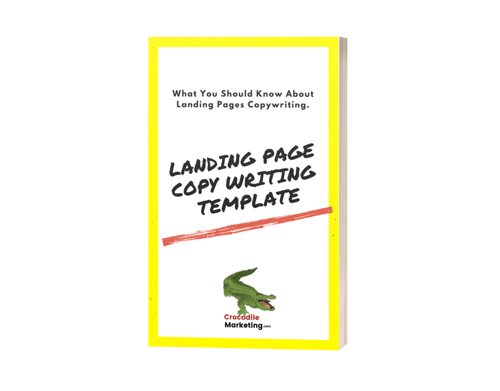
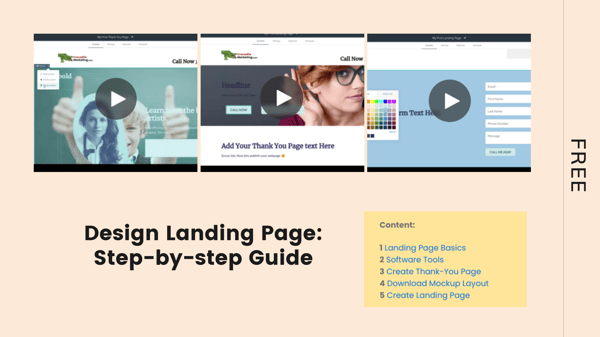 In this guide, you will learn how to create, style, and publish a landing page
In this guide, you will learn how to create, style, and publish a landing page 